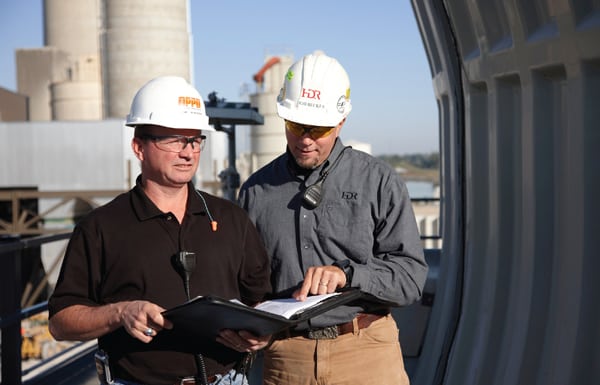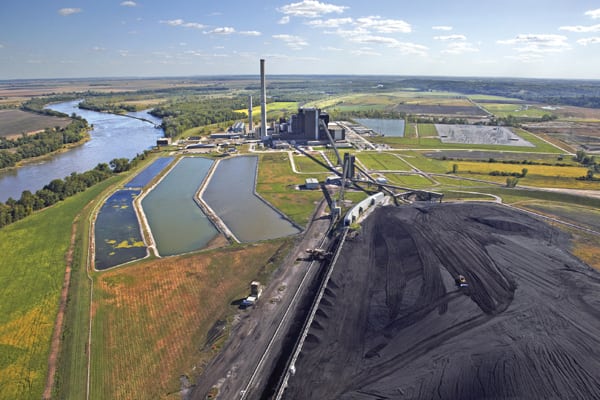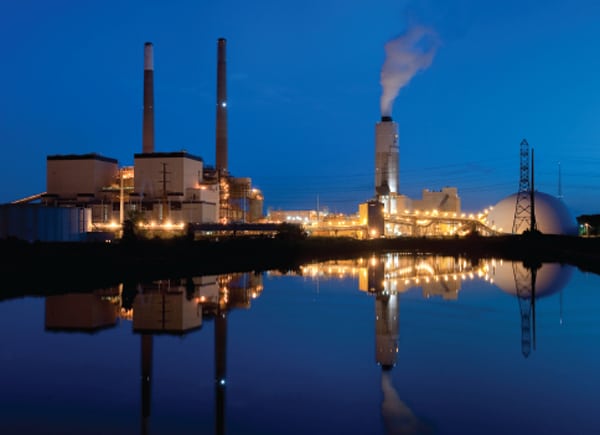Who Needs an Owner’s Engineer?
In the past, members of a utility’s engineering staff spent their career designing and building new power plants. Today, many utility engineers find that opportunity comes around only once in a career. To fill the experience gap, an “owner’s engineer” company can add to a utility’s team a cadre of highly qualified power engineers who focus on avoiding design errors and keeping the project on schedule.
It is a truism of the power generation industry that—despite calls for energy conservation, efficiency improvements, and increased use of renewable energy—the appetite for power will continue to grow as our economy rebounds and expands. The result is that, whether or not consumers publicly endorse them, there is a corresponding need for more power plants, either to address increases in electrical demand or to replace retired capacity. That need is stoked by ever-tighter environmental regulations driving cleaner power production and the never-ending search for innovative ways to generate, store, and move power.
None of this comes free. With price fluctuations and increases for the basic raw materials that go into a power plant, such as copper and nickel, the cost to build a full-scale coal- or natural gas–fired power plant can easily top a billion dollars today.
And none of this comes easily. Plans developed over many years can end up cancelled when the stubborn obstacles of approval or financing become insurmountable, leaving both plant owners and consumers in a tough spot. Even in the best-case scenarios, the maze of complex and interrelated tasks required to take a project from concept to start-up can seem overwhelming.
Enter the Owner’s Engineer
The solution of hiring an owner’s engineer has been used for more than a decade. It emerged as an industry-based initiative along with the engineer-procure-construct (EPC) contracting method. The most basic definition of an owner’s engineer is someone or, more commonly, a team of experts that serves as an independent advocate for the owner. The owner’s engineer plays a supporting but critical role by filling gaps and supplementing a plant owner’s resources (Figure 1).
 |
| 1. Independent advocate. The owner’s engineer provides experienced engineering talent to augment a plant owner’s staff during design and construction of a plant. The tasks may focus on single assignments or may span a multi-year project. Courtesy: HDR Engineering |
The jobs performed by an owner’s engineer can be large or small and can range from playing a narrowly defined role as a technical reviewer to being a full-scale, start-to-finish extension of the owner’s staff who is involved in all aspects of project development, execution, and completion. An owner’s engineer can be a key management tool to control the number of overall contracts on a large, complex project and to provide an independent voice that represents the owner. But owner’s engineers can also be key team members on smaller projects, such as air quality control retrofits or plant renovations; in such cases, they free up the owner’s staff to focus on ongoing operations without distraction.
The most effective owner’s engineers are those who serve in broader, longer roles that give them time to develop a keen understanding of owner objectives and develop a close relationship with the owner. This close relationship can be essential because the owner’s engineer serves as an advocate for the owner’s business objectives and identifies skill gaps in the owner’s staff that can be filled by the owner’s engineer team.
From Start to Finish
An owner’s engineer can help take a project from concept through commissioning. This can be especially important when personnel cutbacks or inexperience make it hard for an owner to manage the intricacies and details of a project with in-house staff. And, although there is no way to remove all risks from a project, an owner’s engineer can simultaneously enhance opportunities, reduce overall risk, and ensure a deliverable that is closer to the owner’s expectations.
Though it may not seem intuitive, hiring an owner’s engineer can actually reduce a project’s overall capital and operation and maintenance costs. The expense of the owner’s engineer is often easily counterbalanced by cost savings obtained through tight control of the schedule, scope management, change orders, and overall project controls. The owner’s engineer can also identify design options that reduce the owner’s lifecycle costs. Even the tendency of an EPC contractor to raise costs in response to ill-defined scope or increased risk can be better controlled when an owner’s engineer is working on behalf of the project owner to develop a tighter scope.
In the Beginning…
Having an owner’s engineer on board early can make a difference that lasts throughout the life of a project, even after commissioning and start-up. Developing a detailed project scope definition at the outset can keep a project on track, just as failure to properly develop one can lower a project’s odds of successful completion. By carefully defining the project size, location, technology selection, configuration, scope, interfaces, and schedule, an owner’s engineer who is brought in when a project is still in the conceptual stage can help turn it into reality.
Some project owners choose to perform their own initial conceptual design, cost estimating, and scheduling. Before hiring an owner’s engineer, they may even bring on an EPC contractor to serve as a technical reviewer of project progress. Limiting the owner’s engineer role in that way can lead to less-than-optimal results, caused, perhaps, by a lack of clear scope definition that can lead to project costs climbing above budget. An owner’s engineer who is involved from the outset can help develop a project execution plan and contracting strategy, and the owner benefits from having a partner who is intimately familiar with all aspects of the project as the work progresses. Laying the groundwork with the aid of an owner’s engineer can help the owner identify opportunities that may otherwise be overlooked while avoiding or minimizing risks.
An owner’s engineer can also be helpful in securing project financing. To get the best possible financing deal, a project must clearly define—at a very early stage—the schedule, projected costs, and suitability of technology and location. An owner’s engineer can help an owner achieve business objectives and sometimes even explain why something is not feasible while seeking suitable alternatives. Often, white papers developed by the owner’s engineer can help with effective evaluation of alternatives, identify recommended solutions, and document the reasons behind key decisions.
Beyond boosting documentation and rationale to result in the best possible financing deal for a project, having an owner’s engineer involved at the earliest stage of a project can help an owner select the most qualified EPC contractor. Potential EPC contractors want to know many of the same things that financial backers need to know as they make a decision about whether to bid on a project. Just putting an EPC contract together for a large project is time-consuming and can cost several million dollars, but devoting attention to the details and minutia of all contract documents can pay big dividends in avoided change orders and delays as a project progresses.
Some key assistance that an owner’s engineer can provide at project inception include:
- Defining and/or reviewing the project scope.
- Assessing and evaluating the budget and identifying financing sources.
- Conducting feasibility and site selection studies and alternatives analysis.
- Analyzing available technologies and their suitability to a project.
- Preparing early project schedules and design criteria.
- Preparing technical specifications for owner-furnished equipment.
- Preparing EPC contract documents, including RFP (request for proposal) issuance and response analysis.
- Providing permitting assistance and addressing related environmental concerns.
Track and Trend
As a project moves along, the owner’s engineer is a critical link in keeping the work on schedule and on budget, tracking progress, and taking note of any emerging trends. When issues arise, as they nearly always do on large and complex projects, the owner’s engineer can be an effective middle man to check original contract documents and review events to avoid unnecessary and unproductive finger-pointing. Depending on the type of contract, the owner’s engineer may provide detailed design, overall project management, contract administration, and construction oversight.
An owner’s engineer can be extremely helpful to an owner who wants to purchase equipment by writing technical specifications and assisting in the purchase of owner-furnished equipment and making sure that equipment suppliers are in compliance with all contract requirements. The owner’s engineer can solicit and evaluate bids, negotiate contracts, and work with the owner’s outside counsel to develop contracts.
Change management, implementation of earned value, project cost reporting and trending, and overall project controls are other areas in which an owner’s engineer can help as a project progresses.
As the End Nears
By the time a project nears the start-up and commissioning phase, the owner’s engineer should be a familiar and trusted advisor. At that stage, the owner’s engineer can develop punch lists and document warranty items in preparation for performance testing and handover from commissioning to start-up.
The role of the owner’s engineer can even extend beyond commissioning, based on the owner’s needs. For example, if an owner’s team needs time to become familiar with an entirely new system, having an owner’s engineer stick around after project start-up to assist with training can be helpful. A seasoned owner’s engineer can also help with any problems that arise during the initial warranty period, such as dealing with performance expectations or emission limits.
How to Pick an Owner’s Engineer
With the use of owner’s engineer services becoming more common across the industry, more and more firms are offering such services, so how do you select an owner’s engineer? Should you pick a large multi-disciplinary firm? A small, specialized firm? A local firm? Hiring a large, multi-disciplinary firm might appear to be a good choice, but that’s not necessarily the case. A large firm might not be the most cost-effective because of a tendency to overstaff and burn many manhours very quickly.
Actually, the most important step in selecting an owner’s engineer is to become familiar with the individual employees who are proposed to serve on the team. Take some time to understand their expertise, how long they have been in the industry, and the types of projects they have worked on previously.
It’s also a good idea to hire an owner’s engineer firm that has prior experience as an EPC contractor because such companies will bring an understanding of what is involved. That said, it may not be wise to hire an owner’s engineer who is working for an EPC contractor or who has key alliances with vendors. It is important to look for one who is “non-conflicted”—one who won’t jump ship when the RFP for the larger, potentially more profitable EPC contract is issued. You don’t want a company that is trying to gain a foothold at the early stages of project in order to take on a larger role as the EPC contractor later on. In fact, the project owner can prevent this from happening by clearly defining the role of the owner’s engineer in the contract and including a provision that precludes the owner’s engineer from bidding on any related EPC contract.
How It Works in the Real World
The following brief project summaries illustrate the variety of projects that can benefit from having a trusted owner’s engineer as a key member of the project team.
Omaha Public Power District, Nebraska City 2 Power Plant, New Construction. In April 2005, after three years of planning and assistance from an owner’s engineer, the Omaha Public Power District signed an EPC contract to build a 683-MW coal-fired power plant adjacent to a unit built in the 1970s. (See “Top Plants: Nebraska City Station Unit 2” in the October 2009 issue or in POWER’ s online archives.) In contrast to the original plant at the site, which involved well over 300 separate contracts, the new plant was built with a single EPC contract, a key factor in limiting capital costs to $950/kilowatt. When the new plant went live in May 2009, it was on budget and on schedule. For more than seven years, a representative from the owner’s engineer firm maintained an office on site and in many ways was indistinguishable from the owner’s staff (Figure 2).
 |
| 2. Long-term project support. When Omaha Public Power District constructed Unit 2 of its Nebraska City Power Plant, HDR Engineering supported the staff on-site for more than seven years. Courtesy: HDR Engineering |
Constellation Energy, Brandon Shores Power Plant, Air Quality Control Retrofit. An owner’s engineer project that ran from 2006 to 2010 at the Brandon Shores Plant outside Baltimore, Maryland, involved project management and engineering in support of project development, major equipment and construction specification and negotiation, and consulting and oversight from project inception to completion. (See “Top Plant: Brandon Shores Generating Station” in the October 2010 issue.) The project was executed under a target cost EPC contract with air quality control (AQC) equipment and a new wet chimney procured through direct contracts with Constellation Energy. The state-of-the-art AQC systems installed for the project went into commercial operation in December 2009 for Unit 1 and March 1, 2010, for Unit 2. The new systems make the Brandon Shores Plant one of the cleanest coal-fired power plants of its size in the U.S. today (Figure 3).
 |
| 3. Project partner. When Constellation Energy upgraded its Brandon Shores Power Plant with state-of-the-art emissions control equipment, HDR Engineering spent four years on-site supporting the engineering and construction. Courtesy: HDR Engineering |
Alliant Energy, Multiple Sites, Clean Air Compliance Program. Alliant Energy, which serves more than 1.4 million customers in a three-state region in the American heartland, hired an owner’s engineer to assist with implementation of a Clean Air Compliance Program that included multi-pollutant control retrofit projects at multiple coal-fired stations. The projects include installation of low-NOx burners and selective catalytic reduction for NOx reduction as well as activated carbon injection with pulse-jet fabric filters for mercury and particulate matter reduction. The owner’s engineer assisted with conceptual design engineering, managing field test programs to verify design criteria, equipment procurement, and contract negotiations. The owner’s engineer also performed a high-level review of detailed engineering deliverables, including piping and instrumentation diagrams; process flow diagrams; structural, mechanical, and electrical design documents; and validation of performance guarantees.
Edison Mission Energy, City of Industry, California, Natural Gas Plant, New Construction. Using an owner’s engineer helped the Edison Mission Group, a subsidiary of Edison International, establish a contracting methodology and execute an EPC contractor RFP and selection process for a new five-unit, LMS100, natural gas–fired power plant. The plant will serve peak power needs in the Los Angeles area. The owner’s engineer supported development of the EPC technical specification, finalization of the combustion turbine supply contract, project cost estimation, and geotechnical survey specification. The project uses reclaimed water as its primary source of water and includes aesthetic, acoustic, and environmental treatments consistent with its industrial setting. The site, previously owned by the City of Industry’s Urban Development Agency, is well-suited to this new facility because it had existing water supply, natural gas supply, and electrical transmission available adjacent to the project site. In this case, having an owner’s engineer with both power expertise and the ability to navigate local utility and permit approvals was key.
We Energies, Rothschild, Wisconsin, Biomass Energy Project. Development of a 50-MW biomass-fueled cogeneration power plant at a central Wisconsin paper mill benefited from owner’s engineer services that included feasibility analyses, conceptual design development, and project controls (scheduling and cost estimating). Co-locating the plant with an existing steam host facility will optimize project economics by minimizing capital investment through the use of existing infrastructure and maximizing energy conversion and efficiency through cogeneration. This project will nominally supply 200,000 lb/hr of process steam. The owner’s engineer supported biomass combustion technology assessments, AQC equipment selection, thermal performance estimates, capital cost estimates, site layouts, and lifecycle pro forma analysis to establish respective costs of steam and power generation. The owner’s engineer also supported selection of the project design engineer and constructor; technical support continues through design reviews and technical assessments.
— James Connell ([email protected]) is national director of power facilities for HDR Engineering and is based in Ann Arbor, Michigan. Dennis Grennan ([email protected]) is energy sector marketing lead for HDR Engineering and is based in Omaha, Nebraska.